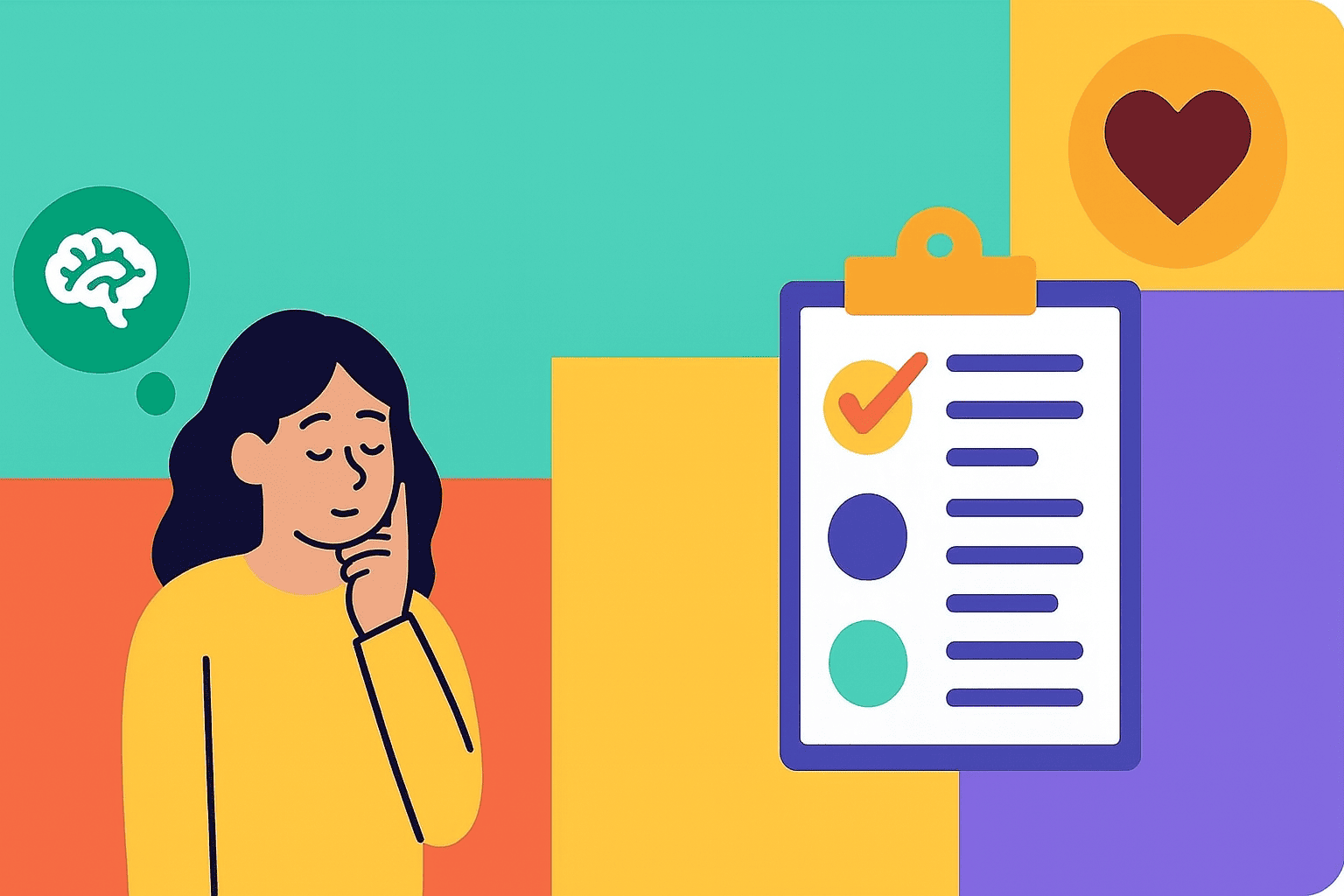Updated on: October 8, 2025
A comprehensive understanding of people’s health often goes beyond just symptoms. The biopsychosocial assessment is a framework that helps clinicians, therapists, social workers, and other practitioners understand the biological, psychological, and social factors affecting a client’s well-being. Using structured templates along with AI-support (like DocScrib) can streamline this process, improve accuracy, and ensure nothing critical is missed.
What Is a Biopsychosocial Assessment & Why It Matters
The biopsychosocial model considers three interacting domains:
- Biological: Physical health, medical history, genetics, neurobiology, medications, sleep, nutrition, substance use etc.
- Psychological: Mental health history, mood, cognition, personality, coping mechanisms, trauma, emotional state.
- Social: Family, relationships, support networks, education/employment, culture, socioeconomic status, housing, legal/social stressors.
Why it matters:
- It provides a fuller picture of the client, helping in accurate diagnosis, treatment planning, risk assessment, and personalized interventions.
- It helps identify not just symptoms, but root causes and contributing factors.
- Ensures treatment is holistic, not just focused on one dimension.
- Enhances communication among providers and with clients.
- Helps reduce risk of missing critical information, which can lead to treatment gaps or misunderstandings.
Core Domains & Fields in a Good Template
A high-quality assessment template should include clear, structured domains and fields.
| Domain | Key Fields / Questions | Why They Are Important |
|---|---|---|
| Client Info & Demographics | Name, age, gender, pronouns, cultural background, language, emergency contacts | Identifiers, cultural factors affect care; needed for personalization. |
| Reason for Referral / Presenting Problem | What brought client in; onset, duration, severity; client’s goals | Anchors the assessment; focuses the rest of the template. |
| Biological History | Medical history, medications, allergies, sleep, nutrition, substance use, family medical history | Biological health influences psychological & social aspects. |
| Psychological History | Mental health diagnoses; trauma; coping strategies; risk factors | Guides appropriate interventions. |
| Social History & Environment | Family dynamics, social supports, work/school status, finances, housing, legal concerns, cultural factors | Social context shapes both stressors and supports. |
| Strengths & Protective Factors | Skills, resilience, hobbies, support networks | Strength-based approach supports recovery. |
| Risk Assessment | Suicide/self-harm risk, substance misuse, abuse history | Critical for safety planning. |
| Mental Status Exam | Appearance, mood, cognition, speech, judgment | Clarifies diagnosis and functioning. |
| Summary & Case Formulation | Integrates domains into prioritized case picture | Translates into treatment focus. |
| Treatment Plan & Goals | Interventions, measurable goals, referrals | Directs action. |
| Follow-Up & Monitoring | Review timelines, monitoring criteria | Ensures accountability and adjustment. |
Sample Biopsychosocial Template Structure
Biopsychosocial Assessment Template
| Section | Fields |
|---|---|
| Client Demographics | Name, DOB, gender, pronouns, cultural background, emergency contact |
| Presenting Problem | Onset, severity, client goals |
| Biological History | Medical history, medications, family health history, lifestyle factors |
| Psychological History | Past diagnoses, trauma, coping, cognition |
| Social/Environmental History | Relationships, supports, housing, finances, culture, work/school |
| Strengths | Resilience, skills, hobbies |
| Risk & Safety | Suicide/self-harm risk, abuse, substance misuse |
| Mental Status Exam | Mood, affect, thought process, behavior |
| Case Formulation | Key findings, how domains interact |
| Treatment Plan | Recommendations, measurable goals, timelines |
| Follow-Up | Monitoring plan, next review |
How DocScrib AI Supports Biopsychosocial Assessments
DocScrib adds unique advantages when using these templates:
| Feature | Benefit |
|---|---|
| Template Library | Ready-to-use forms ensure thoroughness |
| AI Prompts | Reduce missed questions or fields |
| Transcription | Capture client interviews automatically |
| Smart Suggestions | Guides clinicians on relevant follow-ups |
| Risk Alerts | Highlights safety concerns instantly |
| Export/Sharing | Integrates easily into EHR or PDF reports |
| Secure Storage | Ensures compliance and data safety |
Best Practices and Common Pitfalls
Best Practices:
- Build rapport for accurate disclosures.
- Document client’s words directly when possible.
- Use objective, clear language.
- Incorporate standardized screening tools when relevant.
- Balance deficits with strengths.
- Always include safety planning when risks exist.
- Keep summaries actionable and focused.
Common Pitfalls:
- Overlooking social or cultural stressors.
- Neglecting to assess risk thoroughly.
- Producing overly narrative notes without structure.
- Missing follow-up or monitoring details.
- Poor documentation of trauma or substance use.
Manual vs DocScrib AI Workflows
Chart 1: Time, Accuracy & Completeness
| Metric | Manual | With DocScrib |
|---|---|---|
| Completion Time | 1-2 hours | 30-60 minutes |
| Missed Fields | Higher likelihood | Much lower |
| Consistency | Variable | High |
| Rework Needed | More | Less |
Chart 2: Risk & Satisfaction
| Factor | Manual | With DocScrib |
|---|---|---|
| Safety Risks Missed | Higher | Lower |
| Client Satisfaction | Moderate | Higher |
| Clinician Satisfaction | Variable | Improved |
| Ease of Sharing | Limited | Seamless |
Implementation Tips
- Review existing intake forms to identify gaps.
- Customize templates for specific client populations.
- Train staff on domains and sensitive questioning.
- Pilot with a small group before scaling.
- Monitor metrics such as time per assessment and client feedback.
- Adjust templates and prompts based on real-world use.
Conclusion
Biopsychosocial assessments provide a holistic framework for understanding clients’ lives and needs. They ensure that treatment is informed by the complex interplay of biological, psychological, and social factors. While traditional assessments can be time-consuming, DocScrib AI makes the process faster, more accurate, and more consistent—without sacrificing depth.
By adopting structured templates and leveraging DocScrib’s AI capabilities, clinicians can provide comprehensive, client-centered care while saving valuable time.
